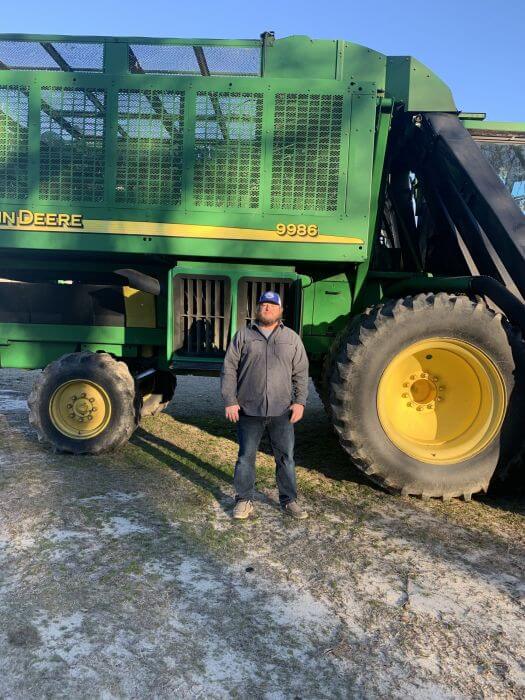
Challenging Management Decisions for Cotton Growers
Last season wasn’t exactly the worst of times, but it could have been better. Weather across vast regions of the Southeast weren’t exactly perfect in 2020. It would be hard pressed to find a grower that ever thinks weather conditions are perfect in any given year.
“It’s always different,” says Justin Williams, a grower in Grantham, NC. “The best we can do is try to give ourselves every chance we can to make a good crop.”
That means a mix of crops and good rotations. Williams has started incorporating cotton into his crop rotation. “We primarily grow tobacco, but cotton has a good fit,” he says. “One of the problems we always deal with are nematodes. By rotating crops and being able to use AgLogic aldicarb on cotton, we can knock that population down.”
Nematodes – The First Threat
“I use AgLogic at-planting on my cotton,” Williams says. “I remember my dad using it years ago. It was briefly off the market, but I’m using it again because I know how it can protect a cotton crop. Our primary problem is root-knot nematode – especially the guava species.”
The guava root-knot nematode (Meloidogyne enterolobii) is generally considered to be one of the most world-wide damaging of nematodes to a wide variety of crops including cotton, tomatoes, soybeans, peppers and sweet potatoes. It can also cause significant damage to cotton varieties that only have a built-in resistance to Southern root-knot nematode (M. incognita).
“Root-knot has become more of an issue as certain crops susceptible to that particular pest have increased in acreage across this area,” Williams says. “We also tend to have sandier soils which makes root-knot more difficult to manage.”

Thrips on Second
Williams applies 5 lbs. per acre of AgLogic aldicarb on cotton when he plants cotton behind cotton. In other rotational scenarios, he applies 3 lbs. of AgLogic per acre.
“Thrips are definitely a factor in cotton,” he says. “You can throw something out there after the fact, but if you don’t have that seedling protected from the very beginning, you’re already fighting a tough battle. Factor in nematodes before that, and it gets worse.”
Time Ticking
There is a lot to be said about earliness, no matter how far south a grower stomps around in a cotton field looking for answers.
“We want to get our cotton out of the field and to the gin as early as possible,” Williams says. “We’re in North Carolina. We have plenty of heat units with our current varieties. I mostly plant Phytogen varieties. But I can tell you the fewer obstacles to deal with as the season progresses, the better.”
In addition to pest control, Williams says earliness is a factor in weed management. “You can see it to the row,” he says. “When you use AgLogic aldicarb, the plants are healthier and more vigorous early on and shade out the weeds, so there is less of a problem with that issue.”
Early squaring and boll set is also a plus, according to Williams. “You really want to set those bottom bolls, but being able to factor those upper bolls into the yield picture is worth their weight because we didn’t have to wait.”
Originally Published in February Issue of Southeast Farm Press